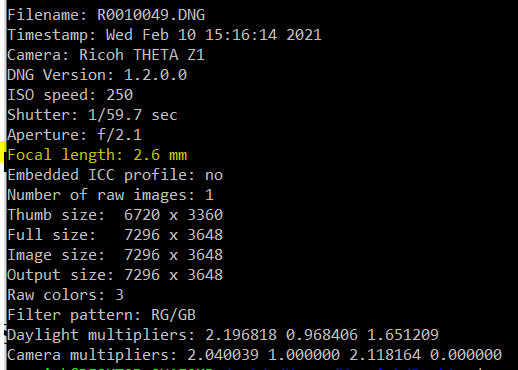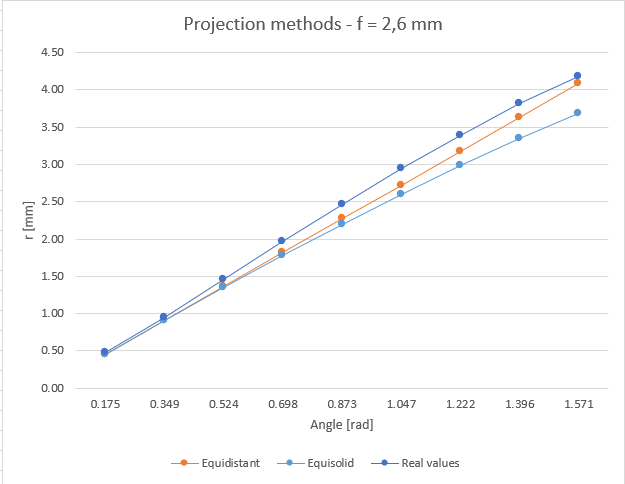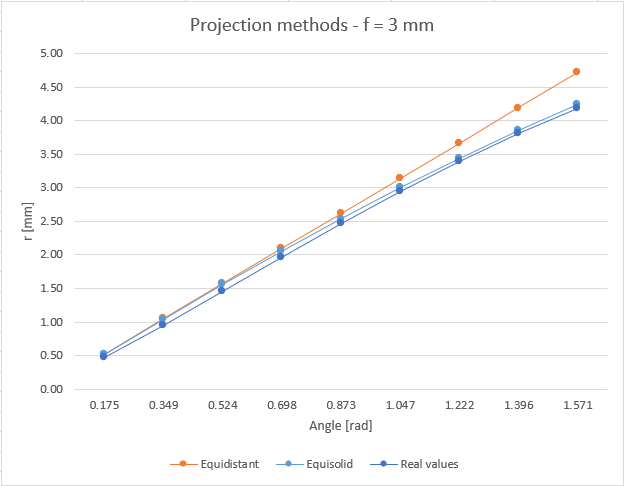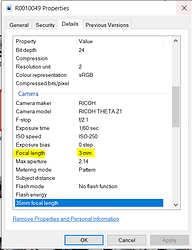Hi everyone
I’m a masterstudent at the Free University of Brussels (VUB). For my masterthesis, I am using the Ricoh Theta Z1 for glare measurements.
As you may or may not know, glare is highly dependent on the solid angle of an object, the size of an object relative to an observer. On an image, this solid angle is translated into a certain amount of pixels. The spherical image captured by a fishe-eye lens has to be projected onto a 2D plane, this means that the pixels get destorted depending on the distance from the center of the image. The most commonly used projection methods are the Equidistant and Equisolid method. I have not been able to find any information regarding the method used on the Ricoh Theta Z1. Does anyone know for a fact which method is used?
This method can also be found with a small experimental setup. This is what I have done as it is an unknown. One of the key elements that need to be known for this is the focal length f of the camera. Here is where again a problem arises. When inspecting the details of the JPEG image on windows, a focal length of 3 mm can be found. When inspecting the RAW file with the command $ dcraw -i -v image.DNG . A focal length of 2,6 mm is observed. On the following site a focal length of 2,6 mm can be found as well: Ricoh Theta Z1 Review - Specifications

The official Ricoh site does not mention the focal length of the Ricoh theta Z1. Can anyone give me the answer to what the real focal length of the Ricoh Theta Z1 is?
This change in focal length greatly impacts the results as I find a Equidistant projection method for a focal length of 2,6 mm and a Equisolid projection method for a focal lenght of 3 mm (that almost matches perfectly). This can be seen in the graphs below.




